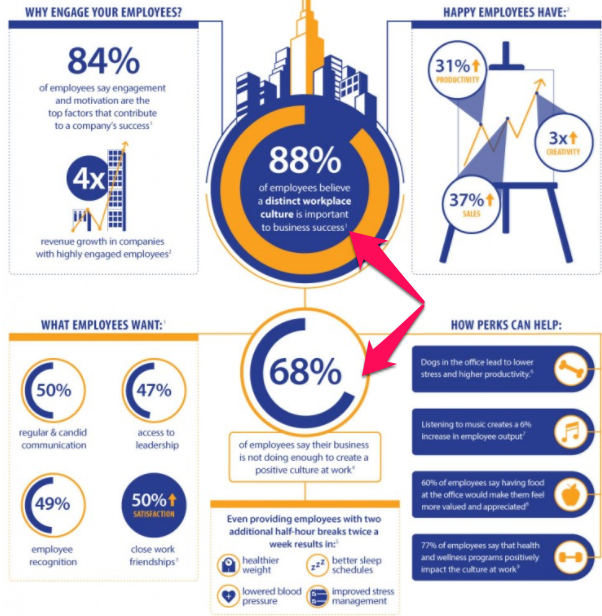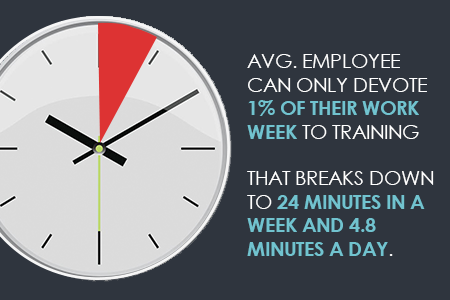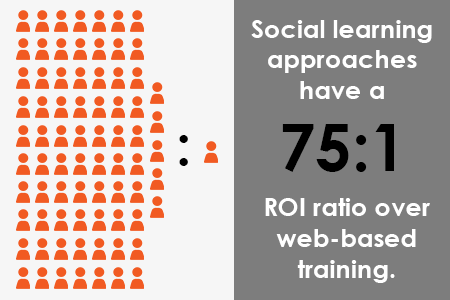What happens when you get an unexpected influx of customers? A well-trained team will knuckle-up, chin down, and attack with everything they have to see you through the rush whether it lasts an hour or an entire day.
It happens every holiday season in retail as well as during promotional periods.
So, what do you do when one of your key employees you rely in has an emergency and can’t make it in?
When you have amazingly skilled and devoted employees, your operation runs like a machine… until one of those employees is removed from the picture. That’s the danger of putting all your eggs in one basket without cross training.
(Note: Want your employees to stay with your business? Let them hear from customers how well they’re doing. CandyBar can help with our private customer feedback feature.)
Cross training guarantees survival – just ask the military
In any branch of the military cross training is built in, required, and a part of everyday operations. Duplication of skill greatly reduces risk so the team doesn’t falter when key individuals are suddenly removed.
This is why the U.S. military does cross training within its own units, as well as allied forces, on things like anti-tank operations as seen here.

Without cross training you are at serious risk of losing key employees and feeling the impact of that in your day to day operations until they can be replaced.
Even if they don’t have an emergency, employees can become burnt out when they start to feel like they’re spread too thin and covering for the lack of skill in the rest of the team.

Your daily operations aren’t as critical as a military endeavor, but taking the same approach to cross training and creating a T-shaped employee can greatly improve your chances of providing the best experience for your customers and improving your chances for growth.
It’s fairly common to hire and develop employees who specialize in one area. They’re amazing at what they do and they get the job done. Those are “I” shaped individuals, fitting snugly into a single category or function and do it smashingly.
Lean on that employee and all hell can break loose if something happens.
Instead, develop a T-shaped employee.

Cross training helps you develop employees with a skill set shaped like a T. They’re still heavily specialized in one area (the vertical column) but have enough skill across other job functions to support the needs and goals of your business if required.
The benefits of cross training
Just because an employee is incredibly good at one particular job, doesn’t mean they’re happy doing it.
In fact, specializing employees without giving them opportunity to do other work could be contributing to your employee turnover. Employees will inevitably have to cover one another, so cross training is a must.

Image: LeaderChat
In this image from LeaderChat some of the main reasons for exiting a job can be fixed through cross training and fostering employee growth such as limited promotions, a lack of challenge, work hours/flexibility, and not being recognized for contributions.
Some 40% of employees who receive poor or very little training tend to leave their jobs within the first year.
By implementing cross training you’ll see company benefits overall, but your employees will benefit as well. This includes benefits like:
- Increased flexibility in employee schedules as they can move between job functions
- More opportunities for employee advancement
- Elicit feedback from a wider group regarding processes and procedures
- Keep employees motivated by rotating assignments and projects
- Pinpoint where employees excel across a wide range of roles and functions
- More durable team that can handle various areas of the business so operations don’t suffer when you lose an employee for any reason
- Faster recovery from disruptions that interrupt business, leading to improved customer satisfaction
- Great sense of teamwork and employee bonding as they all contribute to the bigger picture of the company
You won’t just be improving the skills of your employees and protecting yourself. You’ll ultimately be increasing performance and productivity, retaining your top talent, strengthening culture and nurturing innovative ideas as your team works more closely.
And all of that allows you to better serve your customers.
How cross training can be implemented
Talking about it is, but implementing cross training is the difficult part. It’s not easy to a lot time for training when you already feel like your team is putting in maximum effort.
But it’s worth the investment.
Roughly 70% of job training happens informally, meaning your employees are learning as they go from doing it on the spot or watching others. Use these tips to create a more structured learning environment to build a team full of T-shaped employees.
1. Develop a culture and shared vision
There’s no doubt some employees thrive in a workplace where they feel indispensable, but it’s not a position you should foster or support.
Redirect their goals so they understand how the collective work of the team contributes more to the success of the business. Show each person the part they play in the collective, and how they shape the company culture.

A shared vision, where employees support one another, gets everyone onboard when they know they’re a part of the success and the same team will aid them when they need the help.
2. Set goals and expectations
The ultimate goal of cross training is to have at least one other person on your team that can cover the role of someone else. Every position should have a backup, and employees should understand that this cross training is mandatory
Don’t make the mistake of leaving them to learn informally. If you set formal expectations, then provide clear instructions on what should be learned, who should be teaching it, when, and how.
3. Set up a method for monitoring feedback

Image: Dilbert
For cross training to be effective you need to know what’s working and what isn’t. There’s a good chance the initial implementation won’t work for all employees and you’ll have glitches to work out.
Make sure employees have the opportunity to communicate with you, with mentors, and superiors to provide feedback. Most importantly, make sure you’re listening.
Use that feedback to improve the process. Your employees will feel more valued when they know you’re listening.
4. Gather or create effective training resources
When you move away from informal training to something more structured you need to decide how that will take place.
Creating or acquiring training resources makes it easier for employees to learn. This can be anything from a basic print out detailing tasks to learn to more robust and interactive training or e-learning. When you mix elements like hands-on training, interactive training, and software training programs you increase the likelihood of information being retained.
You can also use some of the resources available to you, like training apps and courses available on mobile.

67% of businesses now incorporate mobile learning in some form, and 99% of mobile users believe that training and education through the use of their mobile device has enhanced the learning experience.
5. Implement a consistent training schedule
The average employee only has time to devote about 1% of their work week to cross training and development, which isn’t enough time to effectively learn and then practice the new activities to ensure they stick.

Don’t rely on your team to get the training done ‘whenever they can find time’. Your employees will give priority to the work they’re tasked with over training. Even if they know they can split time off for training, they don’t prioritize it.
Create a schedule for cross training activities and make it not only mandatory, but consistently a part of the schedule to maintain and reinforce cross training.
6. Identify mentors and get them on your side
Every organization has standout employees that others look to for support, education, guidance, etc. These are the obvious mentors who carry influence among your team members.
When it comes time to develop and implement cross training programs, get your influencers on your side openly supporting the efforts.

Apple Stores utilize mentors and training leads months in advance before new launches to ensure that every employee can assist every customer in need. Those same training programs even extend to customers with the “Today at Apple” training program.
The right mentors will encourage other people on the team and help motivate them and keep everyone focused on your vision.
7. Let employees help with cross training
While one on one cross training can be effective, don’t neglect the potential of building the skills of your team in a team environment.

Social learning is growing in popularity, is more effective than web-based training, and could be a preferred method for your employees so they can learn easily among and from their coworkers.
8. Incentivize training programs
Getting employees jazzed about learning to new roles and skills isn’t always easy, especially if it brings a great deal of change. People are resistant to change for a variety of reasons.
You can combat that and get them more invested through incentivizing training.
Incentives can be a variety of things, they don’t necessarily have to be monetary though that shouldn’t be taken off the table. Some ways to offer incentives and turn employees on to cross training include:
- Mandatory training to take part in employee promotions or events
- Studying for and passing a skill exam to enter a contest
- Accrue time off
- Free lunch
- Gamification with personal recognition and competition
- Customized incentives that fit the employee’s needs, preferences, and interests
Conclusion: Training is worth the trouble
Building, implementing, and maintaining a cross training program is no small task. Taking the initiative to do so will likely result in some short-term loss of productivity as time is allotted for training.
Don’t let that deter you. It’s an investment, and a small price to pay, to reduce risk of having your legs cut out from under you when indispensable employees are unable to report due to illness or emergencies, take a vacation, or move on to greener pastures. It will happen eventually, and it will happen more than once. Use cross training to protect yourself and provide consistently better customer experiences.



